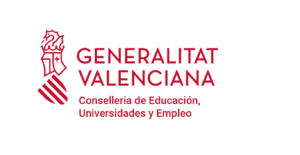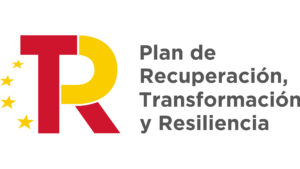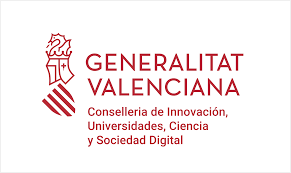Saltar al contenido
2020
Los sistemas de comunicaciones espaciales son un activo clave para soportar los servicios y aplicaciones más relevantes de cualquier Sociedad Digital moderna. Entre ellos están los servicios de telecomunicaciones instantáneos y ubicuos (voz de alta calidad, datos a alta velocidad o difusión de radio y televisión), sistemas globales de radionavegación por satélite (Galileo en Europa y GPS en EE. UU.), así como los programas de observación de la Tierra (como Copernicus y Living Planet, financiados por la Comisión Europea -CE- y la Agencia Espacial Europea -ESA) orientados a la seguridad, estudio del medio ambiente y del cambio climático. Incluso las recientes redes de telefonía móvil terrestre 5G y 6G se verán reforzadas a través de una infraestructura basada en satélites. Como resultado, los ciudadanos de todo el mundo (y en particular los europeos y españoles) se benefician enormemente en términos de crecimiento económico, bienestar social y avances científicos y tecnológicos.
En la actualidad, el Programa Espacial Europeo está siendo impulsado (por la ESA, la CE y el sector industrial) a través de satélites de próxima generación al servicio de importantes proyectos espaciales: la segunda generación de Galileo y la tercera generación de METEOSAT, las próximas cinco misiones Sentinel y el satélite EarthCARE de los programas Copernicus y Living Planet, y las nuevas líneas de producto en satélites de telecomunicaciones denominadas Spacebus y Eurostar Neo. Además, las mega constelaciones de pequeños satélites (proyectos SpaceX y OneWeb) que brindan conectividad global a Internet están en plena expansión. Y todo gracias al establecimiento de enlaces avanzados de comunicación por satélite, basados en nuevos equipos de alta frecuencia (componentes pasivos y antenas) que utilizarán tecnologías emergentes.
Por lo tanto, como también sugieren los principales actores del sector espacial (la ESA, así como empresas multinacionales y españolas), se deben idear y diseñar soluciones novedosas para dispositivos pasivos de alta frecuencia y elementos radiantes. Estos nuevos equipos tendrán que abordar desafíos múltiples e interdisciplinares, en términos de tamaño eléctrico (compactos), frecuencia adaptativa y recursos de ancho de banda espectral (reconfigurables), mayores niveles de potencia de transmisión (lidiando con los efectos de
descarga e intermodulación) y viabilidad de fabricación (problemas de precisión y repetibilidad). Además, estos requisitos deberán abordarse adecuadamente en diversos rangos de frecuencia (que cubren las bandas de ondas de RF, microondas, milimétricas y submilimétricas).
Para ello, se propone un proyecto coordinado (IMPULSE) a realizar por un equipo de 5 grupos académicos de investigación (con colaboraciones previas exitosas). Cuatro subproyectos complementarios desarrollarán conjuntamente investigaciones de primer nivel sobre equipos innovadores de comunicación por satélite, considerando tecnologías de alta frecuencia tradicionales y emergentes: es decir, las basadas en circuitos planares y en guías de ondas 3D, las soluciones híbridas (guías de ondas planas implementadas en sustratos dieléctricos y vacíos), y el conjunto recién propuesto de guías con paredes corrugadas (o gap waveguides). También se investigarán materiales avanzados y sintonizables (como bioplásticos, grafeno y cristal líquido), así como técnicas de fabricación clásicas (fresado, LTCC) y más recientes (fabricación aditiva, micro mecanizado).
Este subproyecto, que actúa como coordinador del proyecto general y de los equipos participantes, además de revisar el trabajo conjunto sobre las herramientas CAE (métodos asistidos por ordenador de análisis, síntesis y optimización), y desarrollar completamente un demostrador integrado para una etapa de salida de múltiples haces en banda Ka, contribuye en el avance del uso práctico de varias tecnologías de guía de ondas para comunicaciones espaciales. En particular, se centra en la tecnología de guía de onda integrada de sustrato (SIW) coaxial, topologías plegadas y estriadas de la versión SIW vacía (ESIW) y componentes mecánicamente sintonizables (principalmente filtros y diplexores) utilizando cavidades de guía de onda 3D. También se aborda la implementación práctica de prototipos mediante técnicas LTCC e impresión 3D (con resinas metalizadas), así como la validación experimental de equipos (efectos de alta frecuencia y experimentos de comunicación con pequeños satélites).

2023
In the new generation of wireless communications systems in the millimeter band, reconfigurable antennas are becoming an essential technological pillar, as they must compensate for the high propagation losses at high frequencies. As a consequence, the development of new high-performance terminals for moving vehicles, trains, airplanes or rescue equipment is today a goal pursued by many companies worldwide. In this context, the main objective of this project is the development of electronically beam-steerable antennas for communications systems in the millimeter band. Specifically, this project aims at improving the efficiency of these antennas by integrating low-loss waveguide technologies instead of traditional printed technologies. The research will focus on the design, fabrication and experimental validation of two technological demonstrators in the K/Ka bands, valid for satellite communications in motion.

Nowadays, telecommunications systems have become an integral part of our daily lives and have an undeniable impact on our private and professional activities. The anyone to anything, anytime, anywhere paradigm, originally conceived for 5G mobile communications networks, is progressively becoming a reality. The primary needs driving this change have been high-throughput mobile connections, reliable low-latency connections, and massive machine-to-machine communications. This trend is leading technological advances in all segments of the ecosystem, where the use of millimeter waves is crucial to implement high-capacity wireless networks. Currently, the electromagnetic spectrum below 6 GHz (sub-6) is highly saturated, so the use of these higher bands allows for a significant increase in data rates. These new millimeter-wave systems are even becoming a valid alternative to copper and fiber connections in urban areas. Their role, already crucial in 5G infrastructure, will be even more important in the future. The 6G network architecture currently being conceived is strongly oriented towards a hierarchical infrastructure, referred to as a vertical heterogeneous network, providing universal coverage by integrating terrestrial, aerial, and space communication links.
This new scenario calls for a new generation of high-efficiency antennas in the millimeter-wave band, being one of the key enabling technologies for the successful deployment of this global network. Due to the heterogeneity of the different nodes and links, the characteristics of the antennas to be developed are very diverse, being possible to use different technologies and typologies. Among other specifications, this project addresses fixed-beam antennas for backhaul links, antennas capable of covering multiple bands, including combinations of mm-wave with sub-6 bands, beam-steerable antennas for communications on the move, or multi-beam antennas for 5G/6G base stations, all of which will be strongly demanded in the next decade.
In addition, the sustainability and affordability of such a huge mm-wave global network demand cost-effective antenna technologies with an enhanced trade-off between fabrication cost and energy efficiency. With this aim, this project investigates different antenna technologies, such as novel versions of gap waveguides with simpler fabrication processes, traveling and leaky-wave radiation mechanisms based on novel slow-wave structures, glide-symmetric holey metasurfaces, or innovative 3D printed configurations. The proposed antenna solutions should be carefully validated through prototyping, with particular attention to low-cost fabrication procedures such as additive manufacturing or conventional printed-circuit-board techniques.

2022
Massive access by society to new broadband communications systems in the millimeter-wave band seems to be an imminent reality. However, there are still some technological barriers to overcome from the antenna point of view. The development of low-cost mobile terminals for Ka-band satellite communications, for example, is one of the most complex challenges for those working in the telecommunications sector. In particular, the ability to reliably control beam steering while keeping the antenna fixed is one of the great challenges of today's technology. This feature has a very important impact on the antenna profile and can really make a difference compared to existing terminals, especially in the aeronautical sector.
Since the antenna is considered a key enabling technology for the envisioned industrial sector, the main objective of this project focuses on demonstrating that the mechanical phase shifter can indeed be operational in an antenna with the size and specifications associated with SATCOM applications, and in general with new millimeter band communications systems. This full-scale evaluation is of vital importance. Some specifications, such as bandwidth, sweep range and polarization purity, are highly dependent on antenna size. A larger size of the internal feed network is more difficult to design and limits the bandwidth. In addition, coupling between radiating elements in the array aperture, especially for scan angles close to the horizon line, quickly spoils the radiation pattern and beam pointing.
The manufacturing cost of the radiating subsystem is another key factor in developing an easily industrializable product. In this project, alternative guiding technologies to the one used in the original prototype are studied in order to reduce costs. The size occupied by the phase-shifting structure is also another feature to be improved in order to achieve a competitive prototype. The final goal of this project is the experimental demonstration of the concept by means of a functional prototype and the dissemination and commercialization of the results among the sectors of interest.

2021
The new application technologies envisioned for the next decade make that technical performance requirements of 6G must be higher than those currently achieved by 5G. Requirements of large bandwidths (to be defined, but higher than 400 MHz), high peak data rate (more than 1 Tbps), high user experience rate (on the order of 1 Gbps), density of connected devices (107 devices/km2) and user plane latency (from 25 µs to 1 ms), to mention the most representative, require technical challenges at the PHY layer, but also new improvements in the core network. To overcome these technical challenges, 6G wireless channels need to be thoroughly studied, since the knowledge of the channel is the basis for designing, optimizing and evaluating the performance of any wireless system. As in 5G, the definition of 6G once again represents a challenge in channel measurements and modelling. The introduction of new enabling technologies, e.g., very large arrays and distributed arrays, and large bandwidths require more complete and robust channel models.
Based on the starting hypothesis, the objective of the project is to develop wireless channel models and generate the channel knowledge required to the definition, standardization, and deployment of the future 6G systems. As indicated in the future vision of channel models in Section 1, important contributions are expected to be made in the three following challenges:
- Definition of a new taxonomy of radio channels.
- Inclusion of very large MIMO arrays and distributed MIMO arrays in the wireless channel model.
- Development of hybrid Quasi-Deterministic channel models.
To achieve the objective of the project, we define a methodology that combines channel measurements, channel simulations, and experimental and theoretical channel modelling.

2020
In the coming years, the implementation of broadband communications systems in the millimeter band with global coverage will acquire special relevance. It aims at a convergence of the fixed and mobile services to offer a universal quality of service similar to that of the already mature fiber optic networks. The imminent deployment of 5G networks promises to provide broadband service in sufficiently populated areas, the rest being covered by next-generation communications satellites. The latter allow uninterrupted connection in means of transport (trains, ships, planes) and serve as backup in areas affected by natural disasters or conflict and / or remote zones.
The development of antennas for satellite communications in Ka-band, valid for trains or airplanes, represents a great technological challenge that has not yet been effectively solved by the industry. Very low profile antennas must meet very demanding specifications in terms of gain, secondary lobes, high purity circular polarization, and dual band operation. To these requirements must be added a high degree of reconfigurability, since they must be able to switch polarization in addition to pointing the beam dynamically towards the satellite to compensate for the movement. Also, the deployment of the emerging 5G demands reconfigurable multibeam antennas capable of serving several users simultaneously.
This project addresses the development of new antenna concepts in the millimeter band capable of meeting the demanding needs of these communication systems. Special attention is paid to highly efficient antennas, dual in polarization and / or frequency and capable of reconfiguring their radiation pattern. The control of beam pointing, maintaining the flat character of the antenna, is one of the main objectives of the project. The implementation of a low-cost alternative mechanism to electronic phase shifters opens the door to the development of competitive low-profile terminals. Innovative solutions capable of generating several simultaneous directing beams are also implemented, valid for multi-user and/or multi-path MIMO communications.

2018
The future traffic demands will require the deployment of new communication systems with faster as well as more efficient and reliable connections. The new 5G systems will represent a significant improvement over 4G systems, increasing the speed of LTE-Advanced by 1000. To increase channel capacity, the distribution of ultra-dense networks of base stations, the use of new frequency bands, such as millimeter-wave (mmWave), and the combination of beamforming techniques and advanced MIMO systems arise as a requirement. In this scenario, the knowledge of the radio channel holds the key to define the standard, select new frequency bands, and optimize the deployment of the network infrastructure.
With the aim of studying the radio channel properties for the new 5G scenarios, the project ICAR5G started in 2018. The objectives of this project are to generate new radio channel models based on extensive measurement campaigns, complementing the actions being already developed in other projects, to evaluate the different technologies to be implemented in the radio interface and to optimize the deployment of base stations. In addition, this knowledge is intended to assist decision-making in the process of reorganization and assignment of frequencies in future 5G systems by the standardization and radio spectrum management bodies.
Up to now, extensive channel measurements in underground and indoor office environments have been collected using a novel channel sounder implemented in the frequency domain and based on the use of radio over fiber (RoF) links with omnidirectional antennas. From the channel measurements, realistic channel models have been analyzed and developed in the potential frequency bands to deploy the future 5G systems, with special attention to mmWave, e.g., 26, 28, 38 and 60 GHz. These models have been compared with ray-tracing techniques to develop diffuse scattering models. The performance of multiuser MIMO techniques, that can be introduced into 5G systems, have also been investigated in these particular environments from the channel models.

2017
New antenna concepts and topologies for Ka-band terminals (in the range from 19 to 31 GHz) for satellite communications were explored in this project, targeting at reducing terminal volume and weight so that they may be suitable for on-the-move applications. The proposal was focused on the antenna panel, probably the most complex part of the whole terminal: the mobile terminal comprises TX and an RX antennas operating at well-separated bands (30 GHz and 20 GHz, respectively).
Furthermore, being a cellular service, the mobile terminal must be capable of switching polarization during handover from one spotbeam to the next. Therefore, the project has faced the design of so-called dual antennas sharing the same panel for both polarizations and/or both frequency bands, so that overall surface reserved to the antenna is lower. In addition, the project has studied new beam pointing mechanisms so that the antenna may remain static while the main beam moves tracking the satellite.
During the last year, main effort has been devoted to mechanically-scanned-beam antennas, giving rise to a new concept of mechanical phase shifter which has been experimentally verified. This concept has been subject to a patent and a journal paper.

The main goal of this project was the design of new types of antennas for the 5G generation of mobile communications. This project has focused on three specific areas in the microwave (below 6 GHz) and mm-wave bands:
- On-body sensing applications: A computational modelling of the human body has been developed in the band from 1 to 6 GHz using an integral equation approach and several multimode antennas for on-body sensing applications have been analyzed and designed.
- Reconfigurable mm-wave antenna design for mobile devices: These antennas have been designed using LTCC (Low Temperature Co-fired Ceramics) fabrication technology available at GRE premises.
Reconfigurable multibeam mm-wave 5G indoor base station design: Different metallic planar lens antennas based on non-periodic frequency selective surfaces have been designed for the frequency range of 20-30 GHz, and a prototype has been fabricated and tested at GRE premises. Moreover, a cavity-backed antenna fed at four different points has been proposed for 5G femto-cells. The prototype of this antenna has shown measured results with an excellent performance for indoor environments.

2020
The main goal of this project is to conceive and develop a new generation of reconfigurable antennas operating into the microwave and millimeter frequency (x-Wave) domains of the electromagnetic spectrum, to face the challenges and requirements of incoming applications. Specifically, the project will focus on various areas:
- Development of an integral equation approach for computational modelling of dielectric mediums. The code presents high efficiency, and it has direct application to the study of dielectric lenses.
- Design of multibeam and mutimode antennas for the sub-6 GHz band, using the Theory of Characteristic Modes. Different antenna designs for 5G base stations with MIMO capability have been developed for the sub-6 GHz band, based on the combined use of multiple feed points and resonant cavities of arbitrary shape.
- Design of a time-multiplexed array, according to new standards for determining the angle of arrival of the waves. Antenna arrays have been developed for angle-of-arrival detection applications and digital beamforming at the LTE-A (1.8 GHz) and 5G (2.6 GHz) bands.
- Fabrication and measurement of a set of LTCC antennas with ceramic materials for the sub-6 GHz band.
Different models of chip-type antennas have been manufactured with ceramic substrates using Low Temperature CoFired Ceramic (LTCC) technology. The new development features a compact size, good efficiency, does not require a "clearance" zone to be integrated into the PCB, and does not detune when installed on IoT devices and sensors of different sizes.
5. Fabrication and measurements of a prototype of a reconfigurable multibeam mm-wave indoor low-cost for 5G and beyond base station, based on metallic planar lenses. A multi-beam multi-feed antenna prototype based on a low-cost flat metallic lens has been fabricated and characterized at UPV. In order to obtain a reconfigurable beam antenna for applications in the 5G millimeter wave band, the focal point is controlled by feeding the lens in different positions. Channel measurement are being performed at UPCT, yielding good results.

2021
The objective of the project is the design of artificial materials (metamaterials or metasurfaces) aimed to exhibit singular or unusual properties when interacting with electromagnetic waves (e.g., reflections, transmissions, and unusual dispersion of the waves). The materials will be designed to operate at the mm-Wave and sub-THz band and will be created using an in-house-developed advanced mathematical optimization code, which will be able to optimize the position of microscopic elements embedded in a macroscopic substrate. These novel materials will be fabricated and tested in the APL facilities at iTEAM. The materials will allow to gain a greater control of the environment of the radio signal propagation, being the objective to create a smart environment around the user for the 6G communication signal propagation.


| With this proposal we seek the support to further develop and consolidate a set of disruptive photonic technologies in which the Photonics Research labs (PRL) has produced pioneering and world-class results and which are called to play a starring role in enabling future emerging applications in communications, sensing, biomedicine, security, industry 4.0, food and agriculture, computing, transportation. These share common needs in flexibility, broadband operation, low power consumption and miniaturized footprint. The project aims to 1) further develop core knowledge in: a) programmable integrated photonics, b) Specialty SDM fibers exploiting spatial multiplexing for signal processing and sensing, c) Hybrid optical wireless-millimeter wave access networks and d) Hybrid active/passive photonic integration, 3) Train a new generation of researchers specialized in them and 3) Provide the basis for future transfer of these technologies to the industrial sector.. |
| Proyecto PROMETEO/2021/015 del programa PROMETEO para grupos de investigación de excelencia financiado por la Conselleria d’educació, investigació, cultura i esport |









